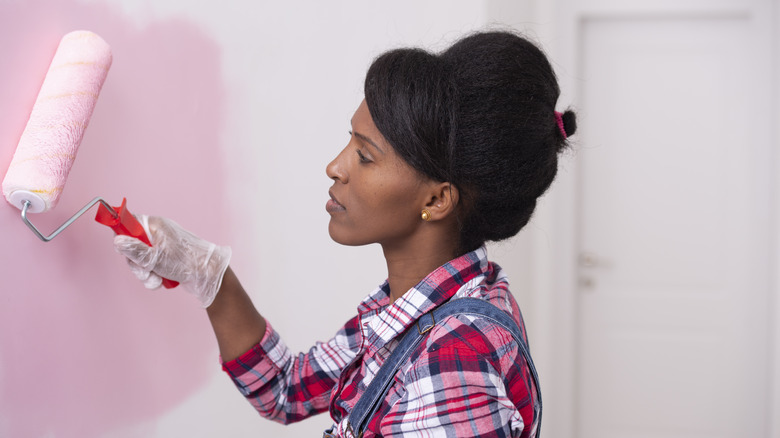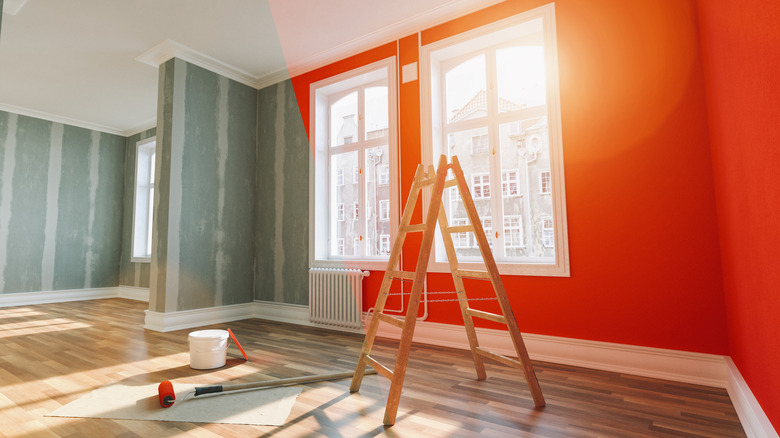How To Avoid Drips When Painting Your Walls With A Roller
Applying a fresh coat of paint is a relatively easy and inexpensive way to transform the appearance of your home and even increase its value. But DIY painting projects can become complex very quickly, and both experienced and amateur painters often face the issue of drips ruining an otherwise perfect painting job. Armed with the right tools, techniques, and a dose of patience, you can master the art of achieving flawless finishes without the stress of having to clean up a mess afterward.
A roller is a versatile tool that is instrumental in averting drips during your DIY painting endeavors. One critical technique that will prevent drips is keeping your paint on the roller's soft material rather than spilling onto the plastic edges, leading to a neat and tidy painting job. How you apply the paint, the quality of your roller, and the quality of the paint can also play a role in how well you get the job done.
Keeping the paint on the roller
As TikTok user @ChicagoJeffthePainter mentions in his video, the key to a drip-free finish is to not get any paint on the edges of the roller — keep it on the knit. Rollers are designed to hold paint within the fabric, which helps distribute the paint evenly. Excess paint on the roller's edges increases the chances of drips, messes, and uneven paint application.
Investing in a high-quality roller also ensures a smoother and drip-free painting process. High-quality rollers often have better fabric, helping the paint adhere. They are designed to hold and release the right amount of paint, ensuring a more consistent application and minimizing the chances of drips or spills. While a high-quality roller may come with a higher price tag, less waste and a cleaner, professional finish make it a worthwhile investment for any painting project.
Choosing top-grade paint is another key consideration for a successful painting project. Premium paints often have better coverage, which creates a more even distribution of paint on the roller and reduces the likelihood of unwanted drips.
Use correct painting techniques
In DIY painting, technique is critical, and there are practical ways to pour paint without making a mess. Start by slowly pouring paint into the tray. Dip your roller into the paint tray and roll it back and forth until all the excess has been distributed evenly.
When it comes to avoiding drips on your walls, painting in a "W" or "M" pattern is ideal. Start by painting an initial 2- to 3-foot wide section in this fashion without adding more paint onto your roller. Once complete, fill in any remaining areas.
Consideration should also be given to how much pressure is applied during painting; too much force could squeeze more paint out and lead to messy drips. Use light, even pressure. Constantly monitor your work and address any excess paint immediately. Sometimes, mistakes happen, so it's equally as important to use a drop mat and quickly clean up spills as they occur.

